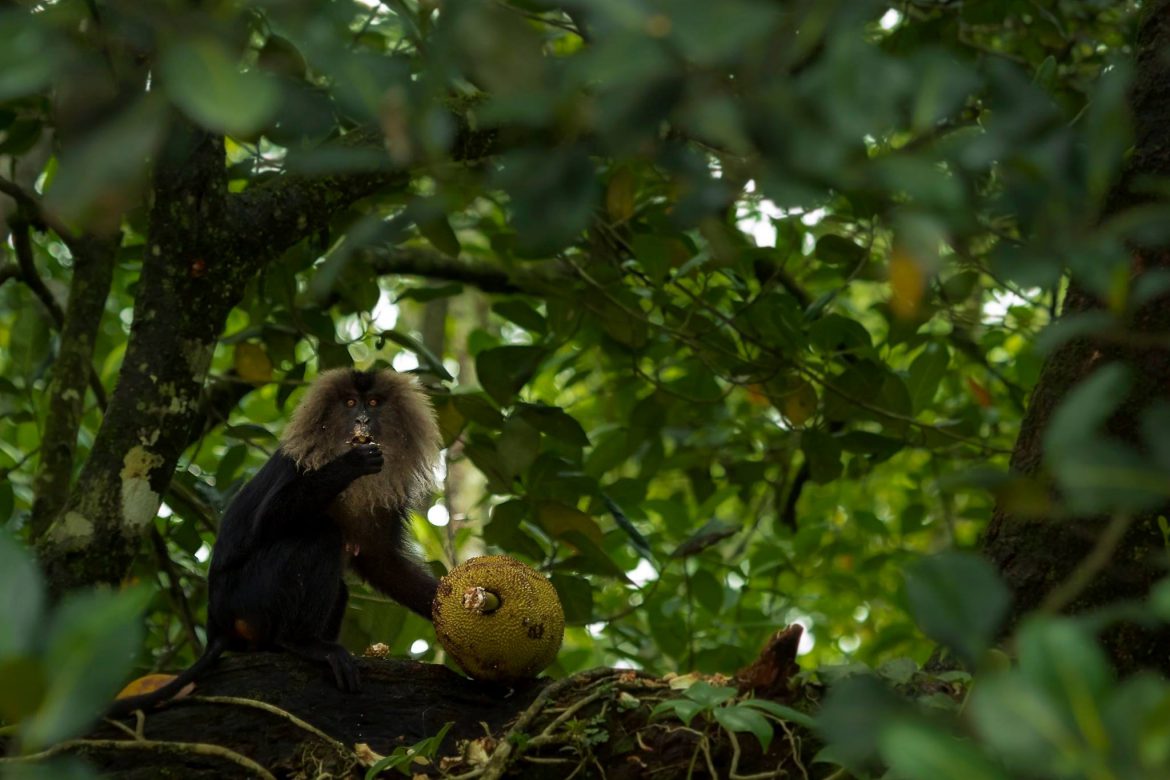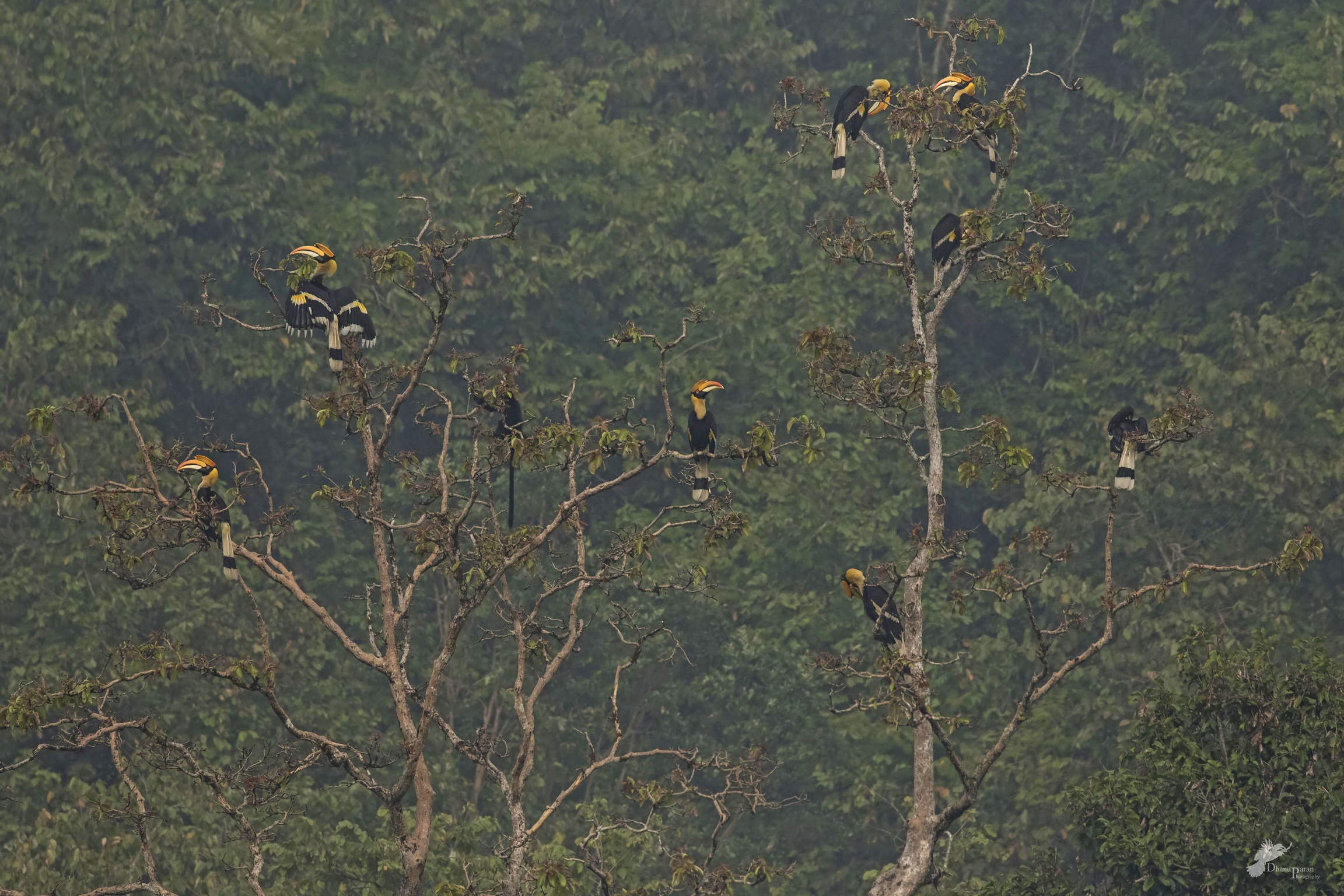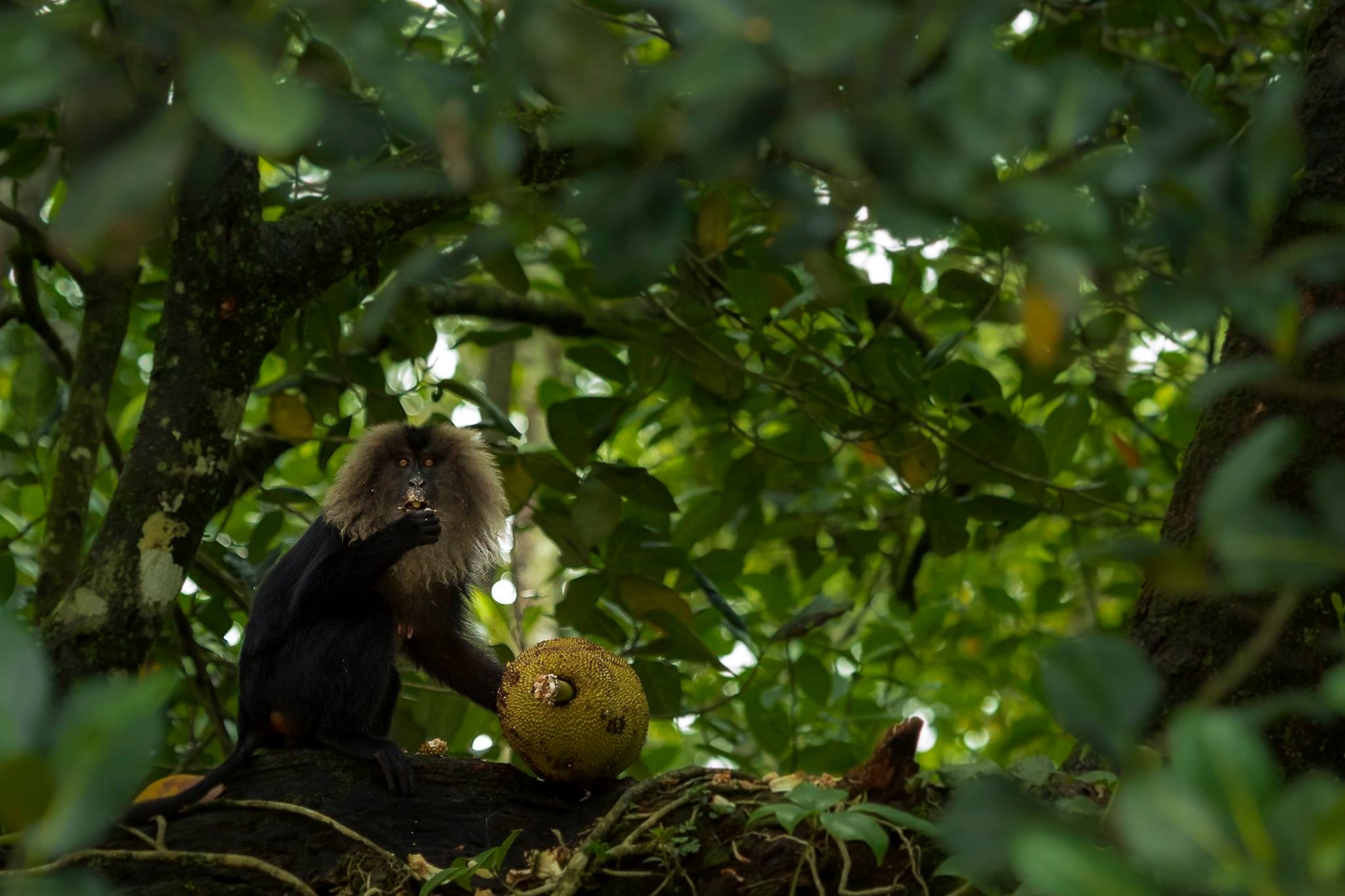The evergreen forests in the Anamalai Hills have no shortage of fruiting trees and a whole army of frugivores— animals that consume a lot of fruit in their diet— that feast on them. These frugivores sometimes visit specific trees during the fruiting season for a choice selection of the ripest of fruits. I once heard of an elephant that made repeated visits to a single breadfruit tree to have its fill of breadfruit. And this is what one researcher says on the subject of elephants and mangoes:
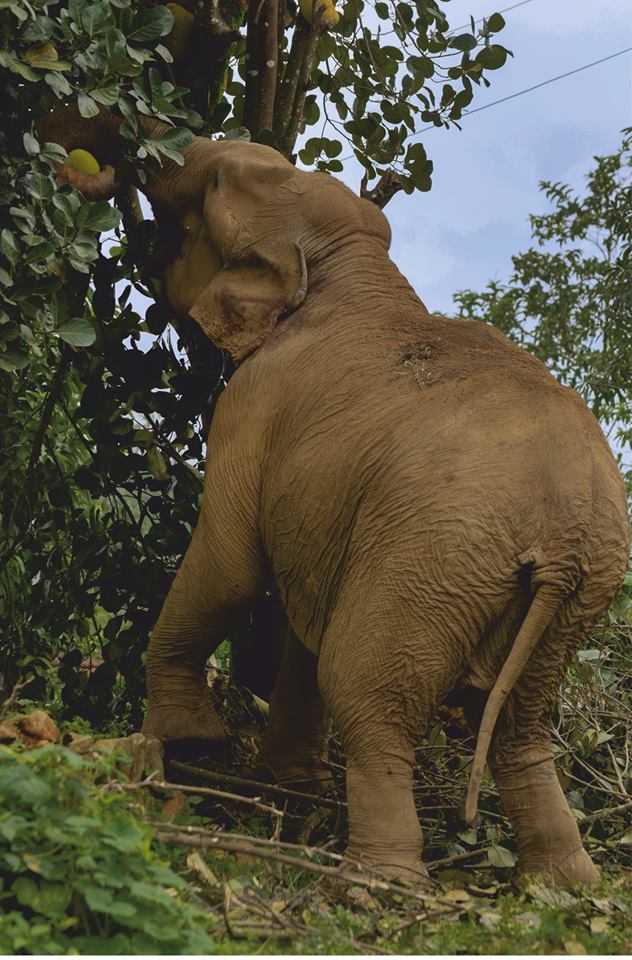
“A fondness for the large fruit of wild mangoes is widely reported. Mangoes are picked up from the ground with the trunk, but elephants will also knock down small trees or shake larger ones to obtain ripe fruit.”
There is another strong, sweet-smelling fruit that lures animals and humans alike: the jackfruit, Artocarpus heterophyllus and its wild cousin, Artocarpus hirsutus. This large evergreen tree is native to India, growing in tropical and sub-tropical forests.
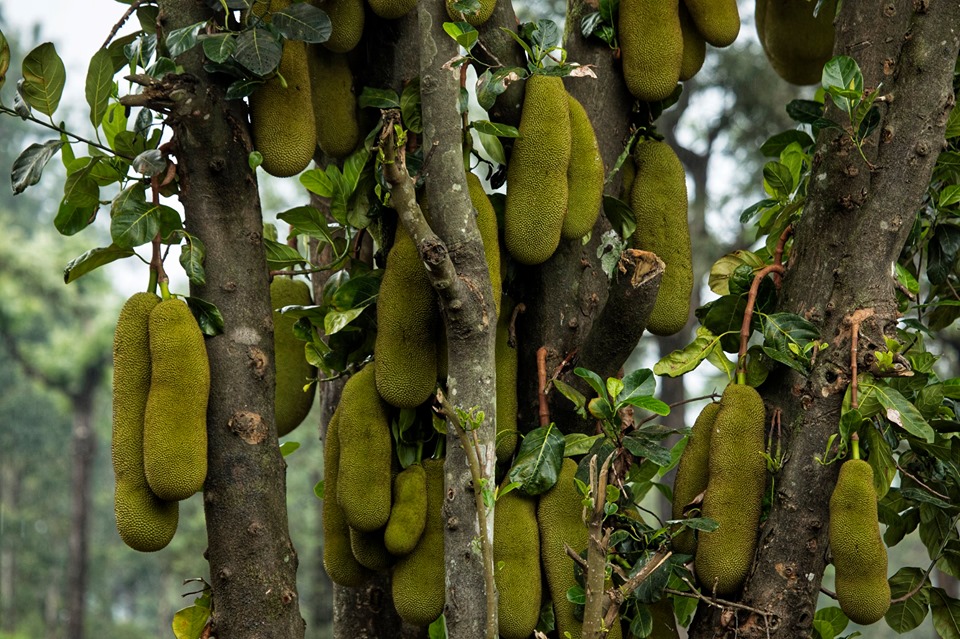
Its fruits are large, growing up to 35 kilos in weight, with multiple seeds, each covered by fleshy, fibrous pulp. The heavy fruits hang from the trunk of the tree or from its main branches, connected to the tree by a thick, almost placental stalk.
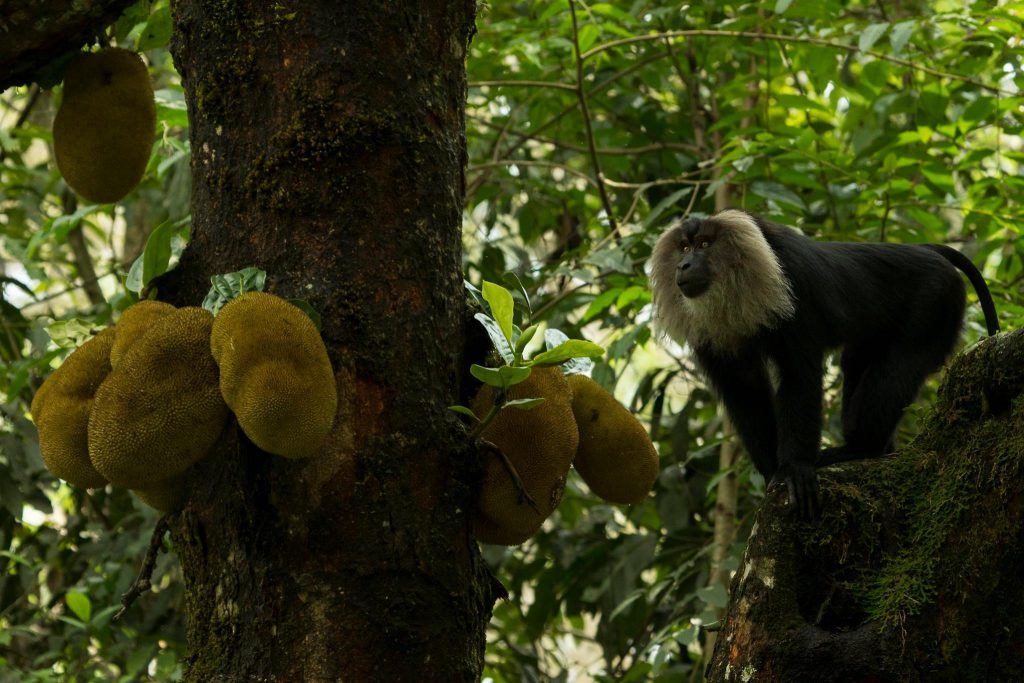
A long guest-list of mammals come to dine at the jackfruit trees during its fruiting season between February and August: elephants, squirrels, sambar, barking deer, macaques, wild pigs, mouse deer to name a few.
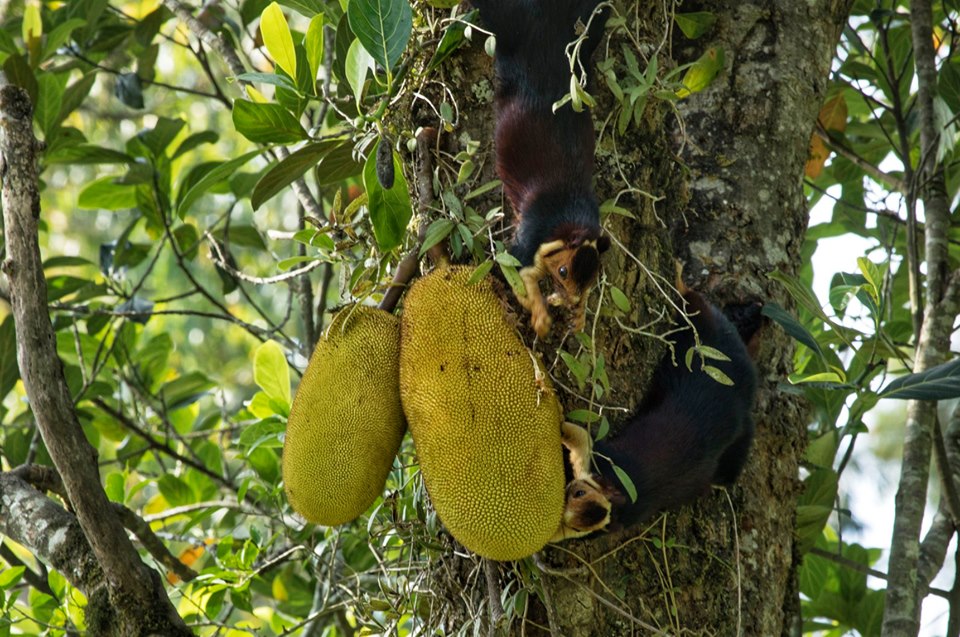
During the day, lion-tailed macaques sit high up in the tree and tear the fruits open in an almost carnal act of savagery and have their feast. At night, a different host of creatures visit the tree: scurrying rodents that safely hoard the seeds in different burrows to eat later, civets that sometimes eat the fruit whole, seed and all; flying squirrels and fruit bats.
Like the elephant and the breadfruit, I’ve heard another story of an elephant and a jackfruit tree in a settlement in Valparai. The locals say the elephant is a faithful visitor to the tree every year during the fruiting season. Unfailingly, they would see the same elephant at the same jackfruit tree, where it would have its fill and then lumber away.
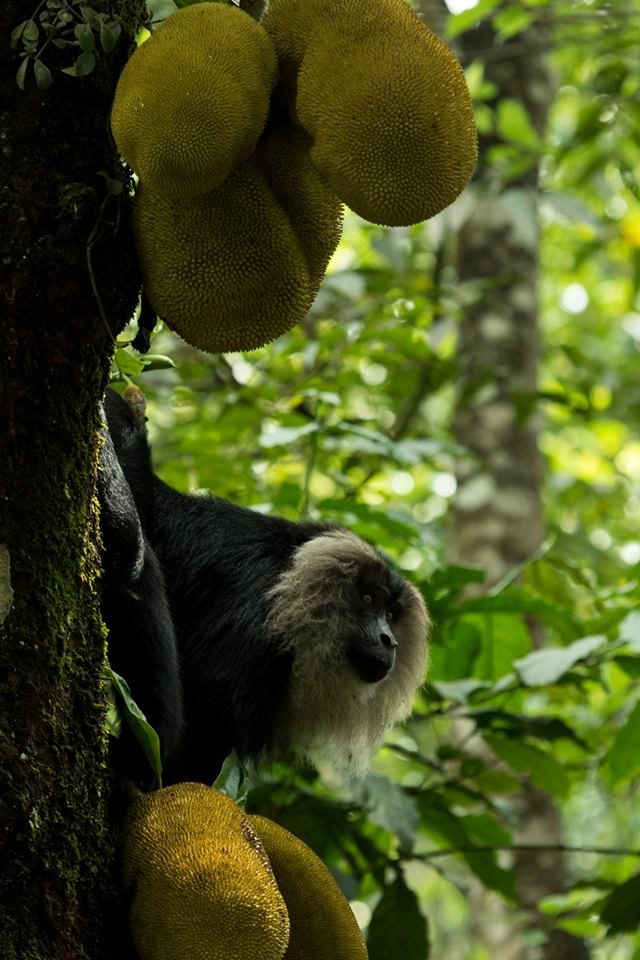
Two species of macaques have a particular fondness for the fruit: the lion-tailed macaque (LTM) and bonnet macaque. The bonnet macaques often follow the LTMs to fruiting jackfruit trees. If you expected frequent tussles to break out between them you would be wrong; the lion-tailed and bonnet macaques feed at different heights of the tree or on different trees to avoid direct contact with each other. Instead, it is the lion-tailed macaques themselves who sometimes fight with each other over the fruit and there is a strict hierarchy in which they access it: if there is a male in the troop, he eats first and alone and dominant females do not tolerate other sub-adults feeding along with them.
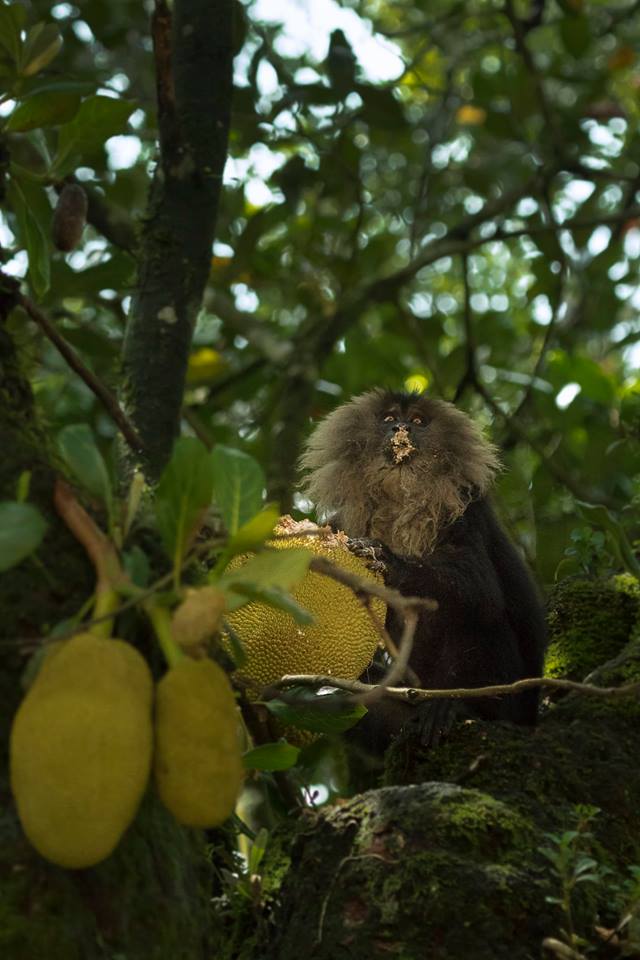
You could spend an absorbing hour watching the macaques feeding: they eat messily using both their hands and their mouth or stuff many fruits in their cheek pouches to eat later. Afterward, they spend time licking their fingers to clean the sticky sweet juices of the jackfruit.
The macaques often drop fruits while they eat them which are then eaten by the sambar, barking deer and even tortoises. Fallen, discarded fruits that rot and ferment on the ground begin to release aromatic odors that attract butterflies like the common Nawab and the Danaid eggfly.
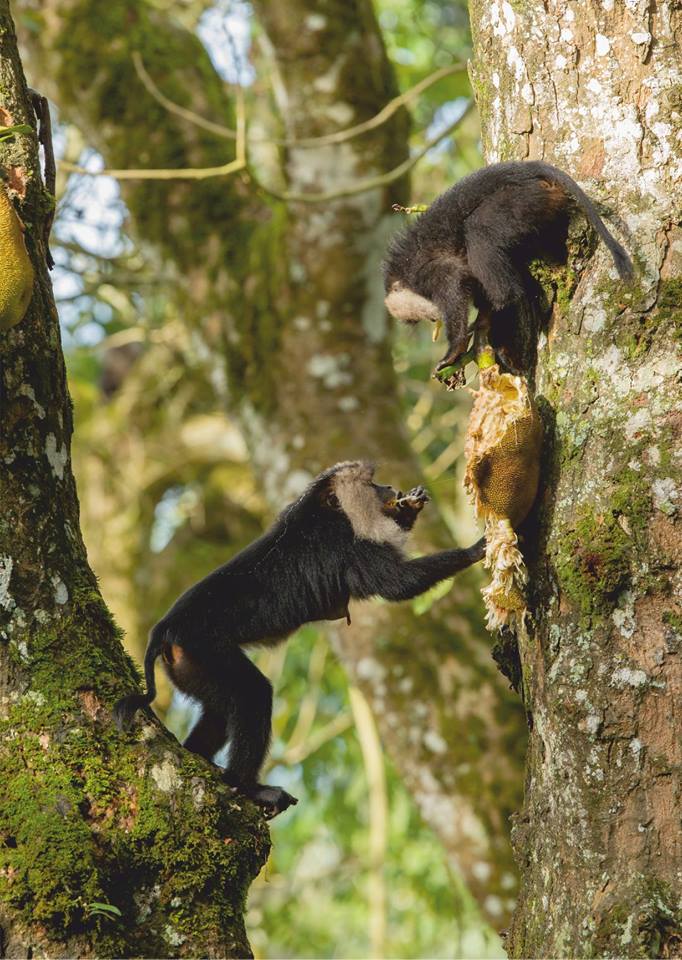
And it is in the interest of the trees to have it this way: many of these animals help in dispersing the seeds of both jackfruit and other fruiting trees: they either swallow the seed and poop it far away, carry the fruits away from the parent tree to eat later or drop the seed beneath the tree. Seeds that are pooped or dropped far away from their parent tree have a higher chance of surviving since they are not competing for the same resources as the parent tree and can escape diseases that can wipe out similar species that occur close to each other.
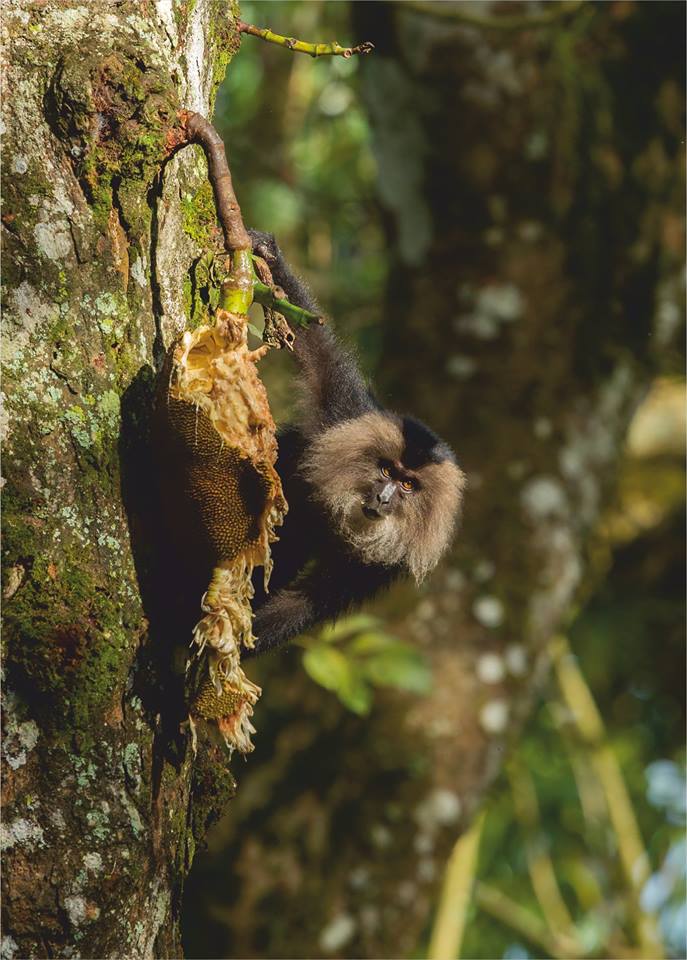
When you see little jackfruit saplings in the poop of an animal, it’s not hard to see that the jackfruit trees and their army of frugivores, like all fruiting trees and their army of frugivores, are so reliant on each other. Until these saplings grow into a tree, and while the fruiting season lasts, you know what to do. Follow the lion-tailed macaques.

